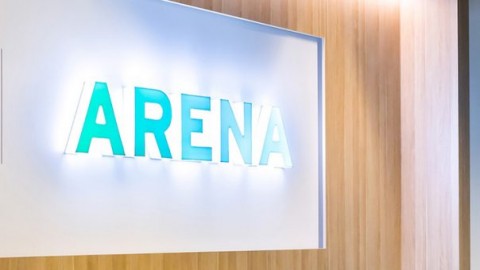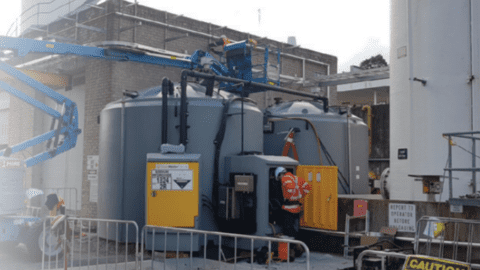According to a prediction by UN-Habitat – the United Nations program for human settlements and sustainable urban development – approximately two thirds of the world’s population will be living in urban areas by 2050, bringing a distinct set of challenges and opportunities to the area of urban development.
Rapid population growth and urbanisation mean greater demand for essential services such as energy, water, waste and telecommunications, with much of this infrastructure installed underground.
Expanding and maintaining this complex network of utilities requires careful planning, along with innovative systems that minimise community disruption and protect the environment.
A number of utilities are using sensors and digital technologies to better monitor the health and performance of their networks, but there will still be a need to repair and replace a significant number of pipes and cables.
That presents a sizable problem, since digging up roads and surfaces invariably upsets customers and results in substantial costs, particularly if works drag on.
In many cases, trenchless or no-dig technologies could offer a solution. Without the need to employ large open cut trenches, jobs can generally be completed far more quickly, far more cheaply, and with far less disruption and environmental waste.
Open cut trenching is a traditional method of underground utility installation and replacement that involves excavating down to and exposing the existing pipe.
While open cut trenching has its advantages in particular circumstances, this construction method can cause huge disruption in congested urban settings, creating road closures, traffic delays, unnecessary detours, loss of access to homes and businesses, unsightliness, and noise pollution.
No-dig techniques vary widely, covering repair and replacement, and many are extremely well established.
They include ‘keyholing’ – the process of making small, precisely-controlled excavations for location, inspection, repair, maintenance and installation of utilities – as well as more specific concepts such as slip lining, cured-in-place-pipe and horizontal directional drilling (HDD) that have been around for several decades and are continuing to increase in popularity.
When considering how trenchless technologies might play a role in any utility infrastructure installation or replacement program, engaging with experts at the earliest possible stage is key.
Asset owners and contractors are not always aware that many of the solutions to the challenges they face are already in existence, with many coming to rely on the expertise of trenchless ambassador TRACTO-TECHNIK.
A specialist in trenchless technology solutions for pipe installation and renewal, TRACTO-TECHNIK Australia has been a trusted partner for utilities in Australia, New Zealand and Asia since 1988.
The company’s unique and versatile product portfolio covers the complete range of trenchless pipeline construction for supply and disposal, including soil displacement hammers and mini drilling systems for installing service connections, ramming machines for pipeline construction, HDD systems for crossing traffic routes and waterways, and pipe bursting systems for pipe renewal.
From its humble beginnings in Germany in 1962, the equipment manufacturer has developed a global network of trenchless experts, today having around 500 employees worldwide and sales representatives in over 70 countries.
Not just a manufacturer and supplier of high-quality machinery, TRACTO-TECHNIK is also equipped to work closely with network operators, urban planners and engineers, offering comprehensive project consulting and excellent customer service as a priority.
Smart cities need smart solutions
By 2050, the United Nations predicts there will be 9.6 billion people on the planet, putting huge pressure on metropolitan areas to manage resources efficiently and supply their citizens with what they need to thrive and survive – which is why our cities must get smarter.
Cities are major contributors to greenhouse gas emissions. Energy consumption is the biggest source of human-caused greenhouse gas emissions, and the transformation of the global energy sector from fossil-based to zero-carbon is one of the strategies underway to reduce emissions and mitigate the effects of climate change.
Electric transportation offers ideal opportunities for the broader introduction of renewables to the transport sector.
In addition to the environmental benefits of this shift, such as reducing CO2 emissions and air pollution, electric mobility also creates significant efficiency gains and could emerge as an important source of storage for variable sources of renewable electricity.
However, the acceptance of electric vehicles (EV) by the general public depends on alleviating concerns around vehicle range and the low availability of recharging stations.
Even here, trenchless technology offers intelligent and economical solutions for the efficient and low-emission installation of EV charging infrastructure.
TRACTO-TECHNIK’s trenchless systems can be used wherever charging stations have to be installed or connected to the power grid.
Pipes and cables can be installed in any direction without damaging valuable or paved surfaces, making the technology suitable for the serial installation of charging stations on public and private ground, as well as for connection to the distribution network.
The proven technology has numerous possibilities:
- Fast and gentle underground installation of the protection pipes for power and control cables from the connection point (sub distribution) to the charging station and between the charging stations
- The technology is equally economical for the installation of individual or multiple charging stations
- House connections for the power supply of the charging stations can also be installed without trenches
- With the minimally-invasive keyhole technique, the construction pit can be used as the foundation of the charging station
The backbone of a successful smart city is reliable, secure wireless connectivity, enabling an intelligent network of connected objects and machines that transmit data using wireless technology and the cloud.
The advent of 5G technology is expected to propel smart city technology into the mainstream, but it will require new and additional network infrastructure in order to ensure widespread coverage and provide the higher bandwidth and speeds.
TRACTO-TECHNIK’s trenchless products can be used for fibre optic network construction and cable connection to 5G transmission masts and consumer homes or commercial buildings – fast installation is possible along roads, under water and traffic routes, or even through existing sewers.
Using the GRUNDOMAT soil displacement hammer, the complete range of essential services – from sewerage to fibre optic connections – can be installed and renewed without trenches.
Gas, water, wastewater, district heating, electricity and telecoms/data can be easily connected into single buildings, housing blocks or commercial and industrial plants.
The cost pressures in civil engineering led to the development of another TRACTO-TECHNIK innovation: the award-winning GRUNDOPIT K, which can be used for installing, repairing and renewing property service connections via a keyhole access pit with a maximum diameter of only 650mm.
On completion of the work, the drilled-out circular bore is inserted back into place without any subsequent stress cracks or damage to the road surface.
The fast-paced development of the steerable drilling technique allows trenchless installation projects which would have been unthinkable only a few years ago, showcased by the versatility and profitability of the GRUNDODRILL HDD rigs.
Parallel installations up to 500m long are possible, with crossings beneath rivers and other bodies of water being completed frequently.
One of the highlights in the TRACTO-TECHNIK HDD machine family is the GRUNDODRILL 18ACS, which works highly efficiently in alternating soils as well as in the hardest rock, offering distinctively reduced operating costs and construction times compared to similar drilling rigs.
The new GRUNDOPIT PS40 is designed for the challenge of developing the urban underground network, its slim construction ideal for applications in inner city areas.
The amount of supply and disposal pipelines in need of repair and/or replacement is constantly increasing worldwide, especially in aging urban water and sewer networks which suffer from leakage problems and/or inadequate pipe capacity.
Pipe bursting with GRUNDOBURST enables the trenchless replacement of pipes demonstrating common issues such as cracks, encrustation, root infestation, misalignment, positional displacement and split sleeves.
Reinstatement costs due to ground settlement, groundwater interferences and road damage are almost omitted. Moreover, the network capacity can be adapted as new pipes of smaller, equal or even larger diameter of up to 1-2 nominal sizes can be installed.
With trenchless technologies providing sustainable and economical solutions for maintaining and developing vital and complex urban underground infrastructure, it’s clear that the smart city is trenchless.
The benefits of going trenchless:
- Significantly reduced construction times
- Minimisation of costly excavation and reinstatement
- No destruction of valuable surfaces
- Avoidance of traffic jams and diversions
- Low CO2, noise and fine dust emissions
- Up to 40 per cent cost savings
Want to learn more about Trenchless Technology? View the TRACTO-TECHNIK content hub here.
This partner content is brought to you by TRACTO-TECHNIK Australia. For more information, visit www.tracto-technik.com.au.

















